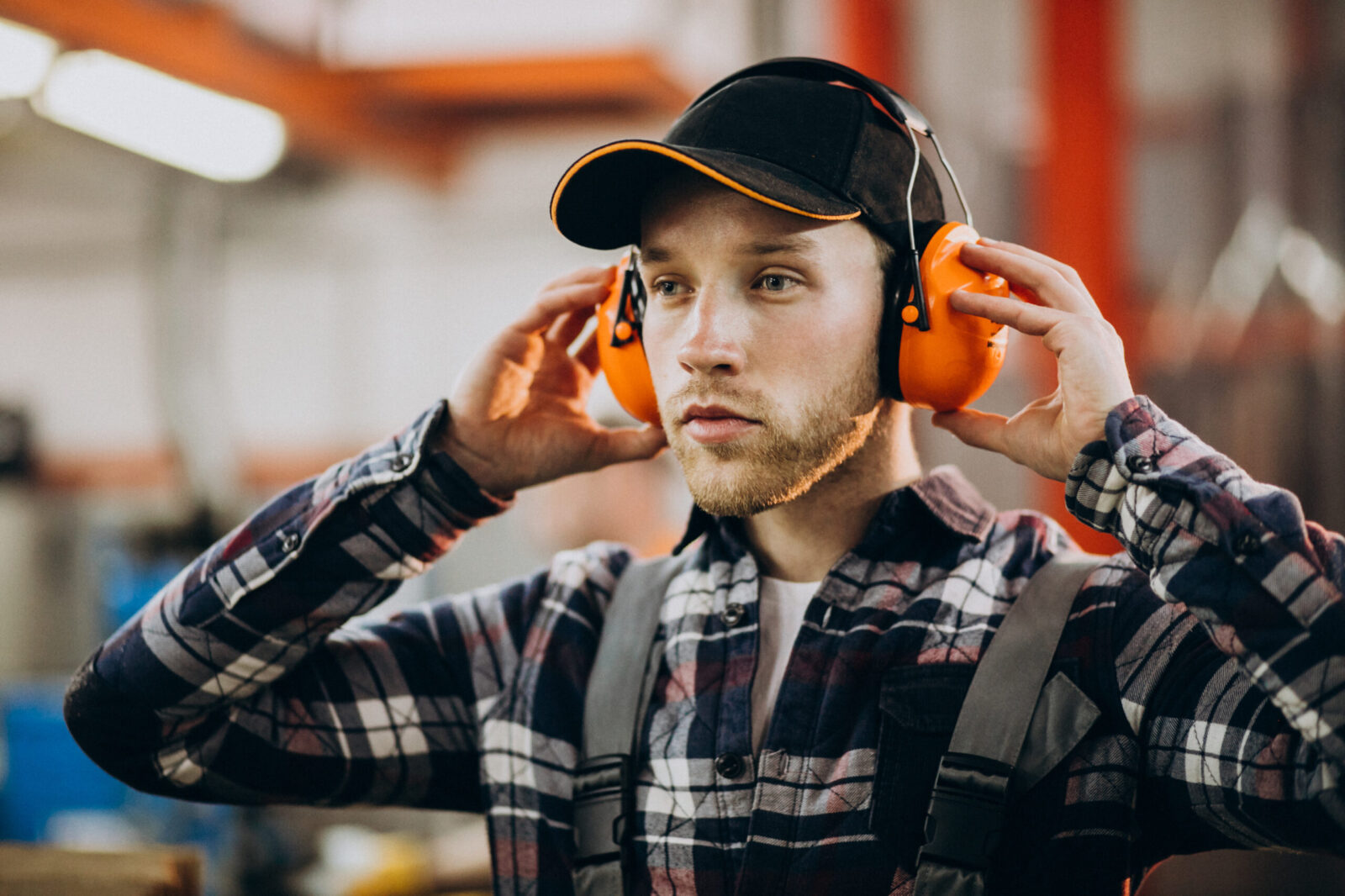
Essential PPE in the Food Industry: What You Need to Know
Overwhelmed by PPE options for food safety? Master your PPE selection for food workers safety with these practical tips.

Get 20€ off on your first order!
Hearing protection is a very important safety measure in the building and industrial sectors all over Europe. Long-term exposure to loud noises can damage your hearing, which shows how important it is to choose the right safety. Both employers and workers should know about the different kinds of hearing protection that are out there, what their benefits are, and where they work best. Here is a detailed list of popular types of hearing protection, along with tips on how to best use them and things to keep in mind when it comes to European safety standards.
Earplugs are one of the most popular and easy to get hearing protection. Earplugs are very small, light, and cheap, so they can be used by workers in a variety of noisy places.
When worn over the ears, earmuffs create a seal around the outside of the ear, blocking out a lot of noise. Earplugs, which come in many styles, are great for places with a lot of noise and always protect you.
Canal caps are hybrid devices that combine elements of earplugs and earmuffs. They consist of soft tips attached to a lightweight headband, which allows users to quickly insert or remove the protection.
Hearing bands are similar to canal caps but are typically more lightweight and flexible. Often worn around the neck when not in use, hearing bands are practical for environments that require frequent insertion and removal of hearing protection.
Hearing protection products that use new technology to make them easier to use and more effective have been made possible by modern progress.
Using electronic technology, active noise-canceling earplugs actively block out background noise while allowing lower-level sounds to pass through. Common in high-noise settings such as airports or heavy industry, these earplugs offer a higher degree of comfort and usability than traditional models. However, they require battery power and may come at a higher price point.
At some companies, connectivity and communication are absolutely vital. Bluetooth-enabled earmuffs let users remain linked to communication devices and help to reduce noise. In places like industrial assembly lines or building sites where real-time instructions are required, these are particularly useful.
The newest way to block out noise is with smart hearing protection. These gadgets can measure how loud something is and let users know when the noise level gets too high. Some types can change the noise reduction on their own, which gives you better protection based on the situation.
European rules dictate that companies with noise levels over permissible limits supply and utilise hearing protection. European Union rule Directive 2003/10/EC specifies the criteria for hearing protection, therefore defining exposure limits and employer obligations. Companies have to make sure the chosen hearing protection satisfies these criteria and fits the particular noise levels they deal with in their workplace.
Selecting appropriate hearing protection calls for knowledge of the user’s comfort preferences, employment demands, and noisy environment. These elements should help you to decide:
Check out how well each gadget blocks noise. Higher ratings mean better protection, but comfort and usefulness should also be taken into account, especially for jobs that need you to move around or talk to other people.
Identify if the environment demands constant or intermittent use of hearing protection. For constant noise, earmuffs or custom earplugs may be preferable, while canal caps or hearing bands might suit tasks with periodic exposure.
Make sure consumers find the protection suitable for regular wear. A gadget that makes one uncomfortable will probably result in less obedience.
When other personal safety equipment (PPE) is needed, like hard hats or face shields, it is very important that the new gear works with the old gear.
For devices like reusable earplugs or earmuffs, regular cleaning and maintenance are vital for hygiene and effectiveness.
Hearing protection is an important part of safety at work in many European businesses. Employers can make it much less likely for their workers to damage their hearing by teaching them about the different kinds of hearing protection and helping them choose the right one for each job. Following EU rules and making sure users are comfortable will help make workplaces across Europe safer and healthier, whether they choose basic earplugs, advanced smart protection, or earmuffs that can be worn with helmets.
Thank you! You've signed up for our newsletter.



















Overwhelmed by PPE options for food safety? Master your PPE selection for food workers safety with these practical tips.

Struggling to maintain clear vision in demanding environments? This guide is here to help. By the end, you’ll know exactly...

Electricians across Europe face unique challenges that require reliable safety glasses to ensure both protection and efficiency. Whether safeguarding against...

Overwhelmed by PPE options for food safety? Master your PPE selection for food workers safety with these practical tips.

Struggling to maintain clear vision in demanding environments? This guide is here to help. By the end, you’ll know exactly...

Electricians across Europe face unique challenges that require reliable safety glasses to ensure both protection and efficiency. Whether safeguarding against...
Get 20€ off on your first order!
Save 30% by buying directly from brands, and get an extra 10€ off orders over €100
Save 30% by buying directly form brands, and get an extra 10€ off orders over €100